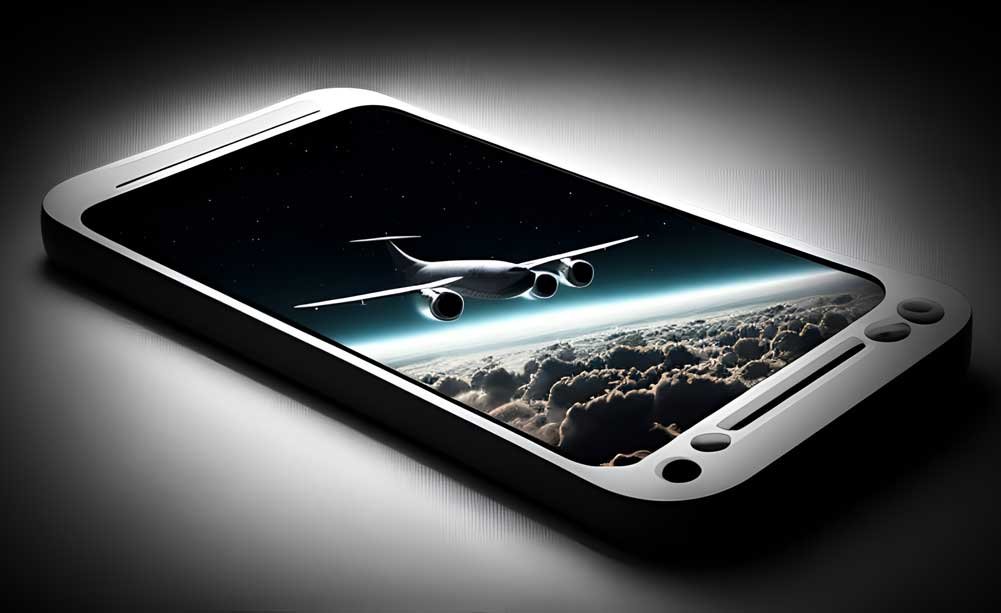Can Police Track a Phone on Airplane Mode?
In today's fast-paced and interconnected world, smartphones have become an integral part of our lives.
With the constant evolution of technology, we have witnessed a significant surge in mobile devices' capabilities, leading to an increasing dependence on them for various tasks.
Alongside this, concerns about privacy and surveillance have also been on the rise.
One question that often arises is:
Can police track a phone on airplane mode?
Short answer: Yes, the police and other government agencies can track a phone’s location, even when airplane mode is turned on. This is because while airplane mode prevents the phone from being tracked via WiFi, Bluetooth, or cell tower triangulation, the GPS is still turned on.
Keep reading to learn how you can protect your privacy from would-be trackers.
Related Questions
-
No, a phone in airplane mode disables all wireless communication including cellular, Wi-Fi, and Bluetooth.
While airplane mode will prevent you from locating your phone, the police and other government agencies may still be able to track your phone’s location.
This is due to the ability to access GPS information for a phone that is in airplane mode.
-
The best way to prevent your phone from being tracked is to turn off all location services and remove any tracking apps that may be installed on the device. You can also use a VPN to protect your online activities and prevent location tracking.
-
Law enforcement officials may ask you to put your phone on airplane mode to prevent any remote wiping of the device or to prevent any unauthorized data transfers or communication. This may be done during an investigation or while your phone is being confiscated for evidence.
Understanding Mobile Phone Tracking
Before we delve into the specifics of airplane mode, it is essential to understand how mobile phone tracking works.
In general, there are three primary methods through which law enforcement can track a mobile device:
GPS Tracking: Global Positioning System (GPS) technology allows mobile devices to calculate their precise location by receiving signals from GPS satellites. Law enforcement agencies can access this information through a warrant or in emergency situations to track a suspect's movements.
Cell Tower Triangulation: Mobile devices continuously connect to nearby cell towers to maintain network connectivity. By analyzing the signal strength and timing of these connections, law enforcement can estimate a phone's location.
Wi-Fi and Bluetooth Tracking: Both Wi-Fi and Bluetooth connections can also reveal a phone's location. When a device connects to a Wi-Fi network or a Bluetooth device, its unique identifier (MAC address) can be logged, and the location of the connection can be used to track the device.
What is Airplane Mode?
Airplane mode, also known as flight mode or offline mode, is a feature found in most mobile devices, including smartphones and tablets. '
When enabled, airplane mode disables the device's wireless communication capabilities, including cellular, Wi-Fi, Bluetooth, and GPS connections.
This feature was initially designed to prevent interference with aircraft communication systems during flights.
However, it is now commonly used in various other situations where users want to limit distractions, conserve battery life, or maintain privacy.
Can Police Track a Phone on Airplane Mode?
Now that we have a basic understanding of mobile phone tracking and airplane mode, let's explore the key question: Can police track a phone on airplane mode? The answer is not a simple yes or no but depends on several factors.
When a mobile device is in airplane mode, it disables most of the wireless connections that law enforcement can use to track it.
Cellular, Wi-Fi, and Bluetooth connections are all turned off, which can make it challenging for police to determine the device's location. However, there are some caveats to consider:
GPS and Airplane Mode: Although airplane mode is designed to disable GPS connectivity, some devices may still allow GPS functionality to work in specific situations or with certain applications. Users may enable GPS services for navigation or location-based apps even when the device is in airplane mode. In such cases, the device's GPS location data can still be accessible to law enforcement.
Disabling Airplane Mode: While a device is in airplane mode, it is challenging for police to track its location. However, once the device is taken out of airplane mode and reconnects to cellular, Wi-Fi, or Bluetooth networks, law enforcement may track it using the methods mentioned earlier.
Stored Location Data: Some mobile devices and applications store location data, which can be accessed later. Even if a device is in airplane mode and not actively transmitting its location, previously stored location data could potentially be retrieved by law enforcement through a warrant or other legal means.
Forensic Analysis: If the police have physical access to the device, they can conduct a forensic analysis to extract data, including location information, call logs, text messages, and more. While this does not involve real-time tracking, it can provide valuable insights into the device's past usage and location history.
Advanced Surveillance Techniques: Law enforcement agencies may employ advanced surveillance techniques to track a mobile device, even if it is in airplane mode. For example, they might use a "stingray" device, which mimics a cell tower and forces mobile devices in the vicinity to connect to it. While this technique is typically ineffective when a phone is in airplane mode, it may still work if the user has manually re-enabled certain wireless connections or if the device's airplane mode implementation is flawed.
In summary, while enabling airplane mode on a mobile device can significantly reduce its trackability, it does not make it completely untraceable.
Several factors, such as GPS functionality in airplane mode, stored location data, and advanced surveillance techniques, can potentially allow law enforcement to track a device even when it is in airplane mode.
Protecting Your Privacy
Given the complexities surrounding mobile device tracking and airplane mode, it is essential to consider additional privacy measures to protect your data and location information. Here are some tips:
Use a Virtual Private Network (VPN): A VPN encrypts your internet connection and routes it through a secure server, masking your IP address and making it difficult for third parties to track your online activities.
Disable Location Services: Turning off location services on your device can limit the amount of location data stored and shared with apps and third parties. This can make it harder for law enforcement to access your location history.
Use Encrypted Messaging Apps: Consider using encrypted messaging apps like Signal or WhatsApp, which protect your messages from being intercepted or accessed by unauthorized parties, including law enforcement.
Update Your Device: Keep your device's software up-to-date to ensure the latest security patches are installed, which can help protect your data and limit potential tracking vulnerabilities.
Be Aware of the Law: Familiarize yourself with the laws and regulations surrounding digital privacy and surveillance in your country or region. Knowing your rights can help you make informed decisions about protecting your privacy and data.
Limit App Permissions: Regularly review and manage app permissions on your device, only allowing necessary access to location data, contacts, and other sensitive information. This can reduce the risk of unauthorized data collection and tracking.
Use Strong Passwords and Multi-Factor Authentication: Protect your device and accounts with strong, unique passwords and enable multi-factor authentication whenever possible. This can help prevent unauthorized access to your data and location information.
Conclusion
While enabling airplane mode on a mobile device can make it more challenging for law enforcement to track its location, it does not guarantee complete privacy.
A combination of factors, including GPS functionality in airplane mode, stored location data, and advanced surveillance techniques, can potentially expose a device's location even when it is in airplane mode.
To better protect your privacy, consider employing a combination of the tips mentioned above, such as using a VPN, disabling location services, and using encrypted messaging apps.
As technology continues to evolve, so do the methods and techniques used by law enforcement to track mobile devices.
It is crucial for individuals to stay informed about these developments and take proactive steps to protect their privacy and data.
By understanding the limitations of airplane mode and implementing additional privacy measures, users can better safeguard their personal information and location data from potential surveillance and tracking.
Ultimately, the balance between public safety and personal privacy is a complex and ongoing debate.
As mobile device users, it is essential to stay aware of the potential risks and take steps to protect our privacy while also recognizing the role that law enforcement plays in ensuring public safety.
By engaging in informed discussions and advocating for strong privacy protections, we can contribute to shaping a digital landscape that respects individual rights while maintaining the necessary tools for law enforcement to carry out their duties effectively.












Inside the Investigation: A Deeper Dive into Police Detective Benefits